SUMMARY CMI
APO-ATOMOXETINE
Consumer Medicine Information (CMI) summary
The full CMI on the next page has more details. If you are worried about using this medicine, speak to your doctor or pharmacist.
1. Why am I using APO-ATOMOXETINE?
APO-ATOMOXETINE contains the active ingredient atomoxetine (as hydrochloride). APO-ATOMOXETINE is used to treat Attention Deficit Hyperactivity Disorder (ADHD) in children 6 years and older, adolescents and adults. ADHD is a behavioural disorder that causes lack of focus and/or hyperactivity that is much more frequent or severe than others who are close in age or development.
For more information, see Section 1. Why am I using APO-ATOMOXETINE? in the full CMI.
2. What should I know before I use APO-ATOMOXETINE?
Do not use if you have ever had an allergic reaction to atomoxetine (as hydrochloride) or any of the ingredients listed at the end of the CMI.
Talk to your doctor if you have any other medical conditions, take any other medicines, or are pregnant or plan to become pregnant or are breastfeeding.
For more information, see Section 2. What should I know before I use APO-ATOMOXETINE? in the full CMI.
3. What if I am taking other medicines?
Some medicines may interfere with APO-ATOMOXETINE and affect how it works.
A list of these medicines is in Section 3. What if I am taking other medicines? in the full CMI.
4. How do I use APO-ATOMOXETINE?
- Swallow the capsules whole with a full glass of water.
- APO-Atomoxetine can be taken with or without food.
More instructions can be found in Section 4. How do I use APO-ATOMOXETINE? in the full CMI.
5. What should I know while using APO-ATOMOXETINE?
| Things you should do |
|
| Things you should not do |
|
| Driving or using machines |
|
| Looking after your medicine |
|
For more information, see Section 5. What should I know while using APO-ATOMOXETINE? in the full CMI.
6. Are there any side effects?
Tell your doctor or pharmacist as soon as possible if you do not feel well after you have been given APO-Atomoxetine.
For more information, including what to do if you have any side effects, see Section 6. Are there any side effects? in the full CMI.
FULL CMI
APO-ATOMOXETINE
Active ingredient(s): atomoxetine (as hydrochloride)
Consumer Medicine Information (CMI)
This leaflet provides important information about using atomoxetine (as hydrochloride). You should also speak to your doctor or pharmacist if you would like further information or if you have any concerns or questions about using APO-ATOMOXETINE.
Where to find information in this leaflet:
1. Why am I using APO-ATOMOXETINE?
2. What should I know before I use APO-ATOMOXETINE?
3. What if I am taking other medicines?
4. How do I use APO-ATOMOXETINE?
5. What should I know while using APO-ATOMOXETINE?
6. Are there any side effects?
7. Product details
1. Why am I using APO-ATOMOXETINE?
APO-ATOMOXETINE contains the active ingredient atomoxetine (as hydrochloride). APO-ATOMOXETINE is in a class of medications called selective norepinephrine reuptake inhibitors.
APO-ATOMOXETINE is used to treat attention deficit hyperactivity disorder (ADHD) in children 6 years and older, adolescents and adults. ADHD is a behavioral disorder that causes lack of focus and/or hyperactivity that is much more frequent or severe than others who are close in age or development.
Atomoxetine works by acting on brain chemicals called amines which are involved in controlling behaviour.
2. What should I know before I use APO-ATOMOXETINE?
Warnings
Do not use APO-ATOMOXETINE if:
- you are allergic to atomoxetine (as hydrochloride), or any of the ingredients listed at the end of this leaflet.
Symptoms of an allergic reaction may include some or all the following:
- shortness of breath, wheezing, difficulty breathing or tightness in chest
- swelling of the face, lips, tongue, throat or other parts of the body
- rash, itching or hives on the skin
- fainting
- hay fever-like symptoms - Always check the ingredients to make sure you can use this medicine.
- Serotonin syndrome is a potentially life-threatening condition which may occur when taking APOAtomoxetine in combination with some other medicines (see section 3 what if I am taking other medicines). Signs and symptoms of serotonin syndrome may include a combination of the following: confusion, restlessness, incoordination and rigidity, hallucinations, coma, fast heart beat, increased body temperature, fast changes in blood pressure, sweating, flushing, tremor, overactive reflexes, nausea, vomiting, and diarrhoea. Contact a doctor or go to your nearest emergency department immediately if you think serotonin syndrome is happening to you.
- Treatment with APO-Atomoxetine may make you feel aggressive, hostile or violent; or aggravate these symptoms if they were present before treatment. It may also cause you to have unusual changes in behaviour or mood (including physical assault, threatening behaviour and thoughts of harming others). If you or your family and/or friends notice any of these reactions, talk to your doctor or pharmacist right away.
Check with your doctor if you:
- you are hypersensitive to, or have had an allergic reaction to, atomoxetine hydrochloride or any of the ingredients listed at the end of this leaflet or any other substances, such as foods, preservatives or dyes.
- you have or have had any medical conditions, especially the following:
- high blood pressure
- low blood pressure
- fast heartbeat
- heart disease
- conditions affecting blood flow in the brain, such as stroke
- liver disease
- kidney disease
- an overactive thyroid gland
- enlargement or disease of the prostate
- difficulty passing urine
- seizures, fits or convulsions
- any psychiatric disorder, including depression or bipolar disorder. - you or your child have or have had:
- thoughts or talk of death or suicide
- thoughts or talk of self-harm or harm to others
- any recent attempts at self-harm.
You may wish to see a paediatric psychiatrist for further assessment and supervision of your child. - you:
- are involved in strenuous exercise or activities
- are using a group of medicines called stimulants
- have a family history of sudden/cardiac death.
APO-Atomoxetine generally should not be used in children, adolescents or adults with known structural heart abnormalities. - you are currently pregnant, or you plan to become pregnant, or are breastfeeding.
- you are taking or are planning to take any other medicines. This includes vitamins and supplements that are available from your pharmacy, supermarket or health food shop.
Your doctor can discuss with you the risks and benefits involved.
Safety and effectiveness in elderly patients older than 65 years and children younger than 6 years have not been established. - you have certain heart diseases such as moderate to severe hypertension, abnormal or dangerously fast heartbeat, thickening and hardening of the walls of the arteries due to cholesterol deposits
- you have an uncontrolled overactive thyroid gland which causes increased appetite, weight loss, intolerance to heat, increased sweating, tremors, and rapid heart rate
- you have a tumour of the adrenal gland, which sits near the kidney (phaeochromocytoma). The symptoms are bouts of anxiety and headaches, palpitations, dizziness, a feeling of weakness, nausea, vomiting, diarrhoea, dilated pupils and blurring vision, stomach pains, and raised blood pressure.
- you have high pressure in the eye (glaucoma), or have a family history of glaucoma
- you are taking medicine called a monoamine oxidase inhibitor (MAOI) for the treatment of depression or have been taking a MAOI within the last 14 days.
- you are unsure as to whether or not you are taking a MAOI. If you take APO-Atomoxetine while you are taking a MAOI, you may experience shaking (tremor), shivering, muscle stiffness, fever, rapid pulse, rapid breathing or confusion.
- Check with your doctor or pharmacist if you are unsure as to whether you are taking a MAOI.
During treatment, you may be at risk of developing certain side effects. It is important you understand these risks and how to monitor them. See additional information under Section 6. Are there any side effects?
Pregnancy and breastfeeding
Check with your doctor if you are pregnant or intend to become pregnant.
Talk to your doctor if you are breastfeeding or intend to breastfeed.
If you become pregnant while taking this medicine, tell your doctor immediately.
3. What if I am taking other medicines?
Tell your doctor or pharmacist if you are taking any other medicines, including any medicines, vitamins or supplements that you buy without a prescription from your pharmacy, supermarket or health food shop.
APO-Atomoxetine may affect or be affected by other medicines. These include:
Some anti-depressants, opioids as tramadol, and medicines used to treat migraine called triptans. These medicines may interact with APO-Atomoxetine and can lead to serotonin syndrome, a potentially life-threatening condition.
Some medicines may be affected by atomoxetine or may affect how it works. You may need different amounts of your medicines, or you may need to take different medicines. These include:
- monoamine oxidase inhibitors (MAOIs), medicines used to treat some types of depression.
- You should stop taking MAOIs at least two weeks before starting APO-Atomoxetine
- certain medicines used to treat depression such as fluoxetine, paroxetine, desipramine, imipramine, venlafaxine and mirtazapine
- certain medicines used to treat irregular heartbeat such as quinidine
- medicines used to treat low blood pressure or to raise blood pressure (pressor agents)
- medicines containing the decongestants pseudoephedrine or phenylephrine
- asthma reliever medicines such as salbutamol, when taken orally as a syrup or as an injection
- certain medicines taken for anxiety such as diazepam or to treat epilepsy such as phenytoin.
If you are taking any of these, you may need a different dose or you may need to take different medicines.
Other medicines not listed above may also interact with APO-Atomoxetine.
Your doctor and pharmacist have more information on medicines to be careful with or avoid while taking atomoxetine.
4. How do I use APO-ATOMOXETINE?
How much to take / use
- For children and adolescents up to 70 kg body weight, the usual starting dose is approximately 0.5 mg/kg once a day.
- After a minimum of 3 days, if necessary, the dose may be increased to approximately 1.2 mg/kg once daily in the morning or as evenly divided doses in the morning and late afternoon/early evening. After 2 to 4 additional weeks, if necessary, the dose may be increased to a maximum of 1.4 mg/kg once daily or 100 mg.
- For children and adolescents greater than 70 kg body weight and adults, the usual starting dose is 40 mg once a day.
- After a minimum of 3 days, if necessary, the dose may be increased to approximately 80 mg once daily in the morning or as evenly divided doses in the morning and late afternoon/early evening.
- After 2 to 4 additional weeks, the dose may be increased to a maximum of 100 mg.
- If therapy is interrupted for more than 1 week, treatment should be started at the lowest recommended dose.
- Your doctor may increase or decrease your dose depending on your condition and any other illness that you may have.
- Follow the instructions provided and use APO-ATOMOXETINE until your doctor tells you to stop.
- Swallow the capsules whole with a full glass of water.
- APO-Atomoxetine can be taken with or without food.
When to take APO-ATOMOXETINE
- APO-Atomoxetine is usually taken one or two times a day (early morning and late afternoon/early evening).
- If you find that you are sleepy during the day or have trouble sleeping at night, talk to your doctor about the best time to take your medicine.
- Take your medicine at about the same time each day.
- Taking it at the same time each day will have the best effect. It will also help you remember when to take it.
- It does not matter if you take this medicine before or after food.
- Continue taking your medicine for as long as your doctor tells you. This medicine helps to control your condition but does not cure it. It is important to keep taking your medicine even if you feel well.
If you forget to use APO-ATOMOXETINE
APO-ATOMOXETINE should be used regularly at the same time each day. If it is almost time for your next dose, skip the dose you missed and take your next dose when you are meant to.
Otherwise, take it as soon as you remember, and then go back to taking your medicine as you would normally.
Do not take more than your total daily dose in a 24-hour period.
If you are not sure what to do, ask your doctor or pharmacist.
If you have trouble remembering to take your medicine, ask your pharmacist for some hints
If it is almost time for your next dose, skip the dose you missed and take your next dose when you are meant to.
Do not take a double dose to make up for the dose you missed.
If you use too much APO-ATOMOXETINE
If you think that you have used too much APO-ATOMOXETINE, you may need urgent medical attention.
If you have taken too much atomoxetine, the most common signs are sleepiness, agitation, hyperactivity, unusual behaviour and an upset stomach. In some cases of overdose, seizures have been reported.
You should immediately:
- phone the Poisons Information Centre
(by calling 13 11 26), or - contact your doctor, or
- go to the Emergency Department at your nearest hospital.
You should do this even if there are no signs of discomfort or poisoning.
5. What should I know while using APO-ATOMOXETINE?
Things you should do
If you feel light-headed, dizzy or faint when getting out of bed or standing up, get up slowly.
Standing up slowly, especially when you get up from bed or chairs, will help your body get used to the change in position and blood pressure. If this problem continues or gets worse, talk to your doctor.
Call your doctor straight away if you:
- Contact your doctor or a paediatric psychiatrist straight away or go to the nearest hospital for treatment if you notice any sudden change in your child's behaviour, if your child is demonstrating any of the following warning signs, if you notice any of the following or if they seem worse.
- Signs to watch for:
- thoughts or talk of death or suicide
- thoughts or talk of self-harm or harm to others
- attempts to commit suicide
- new or worse depression
- new or worse anxiety
- feeling very agitated or restless
- panic attacks
- difficulty sleeping (insomnia)
- new or worse irritability
- acting on dangerous impulses
- an extreme increase in activity and talking
- other unusual changes in behaviour.
Preventing suicidal thoughts or action:
- To try and prevent suicidal thoughts or actions in your child, talk with and listen to your child about his or her thoughts and feelings and pay close attention to changes in his or her moods or action, especially if the changes occur suddenly. Other important people in your child's life can help by paying attention as well (e.g. brothers and sisters, teachers, caregivers and other important people). Pay close attention to your child whenever APO-Atomoxetine is started, or its dose is changed (see ‘Possible side effects’).
- If you notice an increase in aggression or hostility since taking this medication, you should call your doctor as soon as possible.
- Tell your doctor if you experience a seizure, fit or convulsion. If you already suffer from seizures, fits or convulsions, tell your doctor if they seem to increase in frequency.
- Tell your doctor if you notice changes in your sexual function while you are taking this medicine.
- If you are about to start on any new medicine, remind your doctor and pharmacist that you are taking APO-Atomoxetine.
- Tell any other doctors, dentists and pharmacists who treat you that you are taking this medicine.
- If you are going to have surgery, tell the surgeon or anaesthetist that you are taking this medicine.
- It may affect other medicines used during surgery.
- If you become pregnant while taking this medicine, tell your doctor immediately.
- Keep all of your doctor's appointments so that your progress can be checked.
- Your doctor may do some tests (blood pressure and heart rate) from time to time while on therapy. After starting APO-Atomoxetine children may have a reduced rate of growth so your doctor may also monitor height and weight from time to time when on long term therapy.
Things you should not do
- Do not stop using this medicine suddenly.
- Do not take APO-Atomoxetine to treat any other complaints unless your doctor tells you to.
- Do not give your medicine to anyone else, even if they have the same condition as you.
- Do not open your APO-Atomoxetine as the content is an eye irritant.
- In the event of capsule content coming in contact with the eye, flush the affected eye immediately with water and seek medical advice.
- Hands and any potentially contaminated surfaces should be washed as soon as possible.
Driving or using machines
Be careful before you drive or use any machines or tools until you know how APO-ATOMOXETINE affects you.
APO-ATOMOXETINE may cause dizziness, tiredness or drowsiness in some people. If you have any of these symptoms, do not drive, operate machinery or do anything else that could be dangerous.
Drinking alcohol
Tell your doctor if you drink alcohol.
Looking after your medicine
- Keep your capsules in the pack until it is time to take them.
- If you take the capsules out of the pack, they may not keep as well.
- Keep your medicine in a cool dry place where the temperature will stay below 25°C.
Follow the instructions in the carton on how to take care of your medicine properly.
Store it in a cool dry place away from moisture, heat or sunlight; for example, do not store it:
- in the bathroom or near a sink, or
- in the car or on window sills.
Keep it where young children cannot reach it.
A locked cupboard at least one-and-a-half metres above the ground is a good place to store medicines.
Getting rid of any unwanted medicine
If you no longer need to use this medicine or it is out of date, take it to any pharmacy for safe disposal.
Do not use this medicine after the expiry date.
6. Are there any side effects?
All medicines can have side effects. If you do experience any side effects, most of them are minor and temporary. However, some side effects may need medical attention.
See the information below and, if you need to, ask your doctor or pharmacist if you have any further questions about side effects.
Less serious side effects
| Less serious side effects | What to do |
Children, adolescents and adults
| Speak to your doctor if you have any of these less serious side effects and they worry you. |
Serious side effects
| Serious side effects | What to do |
Children, adolescents and adults
| Call your doctor straight away or go straight to the Emergency Department at your nearest hospital if you notice any of these serious side effects. |
Tell your doctor or pharmacist if you notice anything else that may be making you feel unwell.
Other side effects not listed here may occur in some people.
Reporting side effects
After you have received medical advice for any side effects you experience, you can report side effects to the Therapeutic Goods Administration online at www.tga.gov.au/reporting-problems. By reporting side effects, you can help provide more information on the safety of this medicine.
Always make sure you speak to your doctor or pharmacist before you decide to stop taking any of your medicines.
7. Product details
This medicine is only available with a doctor's prescription.
What APO-ATOMOXETINE contains
| Active ingredient | atomoxetine (as hydrochloride) |
| Other ingredients |
|
| Potential allergens |
|
Do not take this medicine if you are allergic to any of these ingredients.
What APO-ATOMOXETINE looks like
APO-Atomoxetine 10 mg: hard gelatin capsule, white opaque body and white opaque cap, printed in black APO AM10. AUST R 290979.
APO-Atomoxetine 18 mg: hard gelatin capsule, white opaque body and gold opaque cap, printed in black APO AM18. AUST R 290980
APO-Atomoxetine 25 mg: hard gelatin capsule, white opaque body and blue opaque cap, printed in black APO AM25. AUST R 290981
APO-Atomoxetine 40 mg: hard gelatin capsule, blue opaque body and blue opaque cap, printed in black APO AM40. AUST R 290982
APO-Atomoxetine 60 mg: hard gelatin capsule, gold opaque body and blue opaque cap, printed in black APO AM60. AUST R 290983
APO-Atomoxetine 80 mg: hard gelatin capsule, white opaque body and orange opaque cap, printed in black APO AM80. AUST R 290984
APO-Atomoxetine 100 mg: hard gelatin capsule, orange opaque body and orange opaque cap, printed in black APO AM100. AUST R 290985
All capsules contain a white to off white powder.
* Not all strengths, pack types and/or pack sizes may be available
Who distributes APO-ATOMOXETINE
Arrotex Pharmaceuticals Pty Ltd
15 – 17 Chapel Street
Cremorne VIC 3121
www.arrotex.com.au
This leaflet was prepared in 2 April 2025
Published by MIMS June 2025

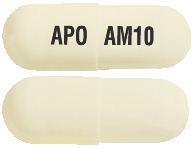
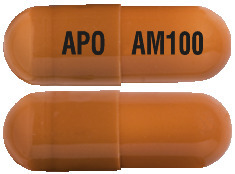
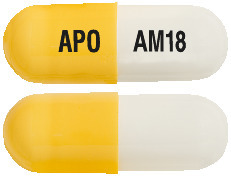
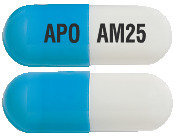
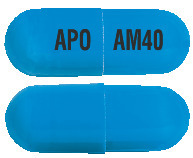
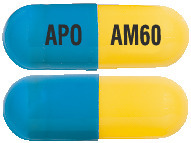
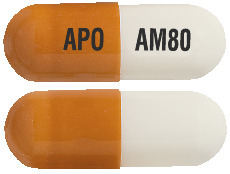
 The following events did not meet this criterion but were reported by more atomoxetine-treated patients than placebo-treated patients and are possibly related to atomoxetine treatment: very common (≥ 10%): abdominal pain (includes abdominal pain upper, stomach discomfort, abdominal discomfort, and epigastric discomfort), vomiting, nausea, blood pressure increased, heart rate increased (heart rate and blood pressure are based on measured vital signs from clinical trials), somnolence (including sedation) and common (≥ 1% and < 10%): anorexia, insomnia (also includes initial insomnia, middle insomnia, and terminal insomnia), early morning awakening, irritability, mydriasis, pruritus, rash, weight decreased, depression (also includes major depression, depressive symptoms, depressed mood, and dysphoria) and uncommon (≥ 0.1% and < 1%): flushing, palpitations, sinus tachycardia, conjunctivitis, syncope (also includes syncope vasovagal), tremor.
The following events did not meet this criterion but were reported by more atomoxetine-treated patients than placebo-treated patients and are possibly related to atomoxetine treatment: very common (≥ 10%): abdominal pain (includes abdominal pain upper, stomach discomfort, abdominal discomfort, and epigastric discomfort), vomiting, nausea, blood pressure increased, heart rate increased (heart rate and blood pressure are based on measured vital signs from clinical trials), somnolence (including sedation) and common (≥ 1% and < 10%): anorexia, insomnia (also includes initial insomnia, middle insomnia, and terminal insomnia), early morning awakening, irritability, mydriasis, pruritus, rash, weight decreased, depression (also includes major depression, depressive symptoms, depressed mood, and dysphoria) and uncommon (≥ 0.1% and < 1%): flushing, palpitations, sinus tachycardia, conjunctivitis, syncope (also includes syncope vasovagal), tremor. The following events did not meet this criterion but were reported by more atomoxetine-treated patients than placebo-treated patients and are possibly related to atomoxetine treatment: very common (≥ 10%): headache, nausea; common (≥ 1% and < 10%): constipation, fatigue, pyrexia, irritability, rash; uncommon (≥ 0.1% and < 1%): palpitations, sinus tachycardia, tachycardia, asthenia, pruritus.
The following events did not meet this criterion but were reported by more atomoxetine-treated patients than placebo-treated patients and are possibly related to atomoxetine treatment: very common (≥ 10%): headache, nausea; common (≥ 1% and < 10%): constipation, fatigue, pyrexia, irritability, rash; uncommon (≥ 0.1% and < 1%): palpitations, sinus tachycardia, tachycardia, asthenia, pruritus. The following events did not meet this criterion but were reported by more atomoxetine-treated patients than placebo-treated patients and are possibly related to atomoxetine treatment: very common (≥ 10%): blood pressure increased, heart rate increased (heart rate and blood pressure are based on measured vital signs from clinical trials) and common (≥ 1% and < 10%): abdominal pain (includes abdominal pain upper, stomach discomfort, abdominal discomfort, and epigastric discomfort), rash, dyspepsia, early morning awakening, terminal insomnia, ejaculation disorder, ejaculation failure, fatigue, lethargy, tachycardia, paraesthesia, chills, vomiting, asthenia, feeling jittery, irritability, thirst, dysgeusia, somnolence (including sedation), tremor, agitation, pollakiuria, testicular pain1, flushing, urine flow decreased and uncommon (≥ 0.1% and < 1%): peripheral coldness, feeling cold, muscle spasms, restlessness, micturition urgency, pruritus, urticaria, blurred vision.
The following events did not meet this criterion but were reported by more atomoxetine-treated patients than placebo-treated patients and are possibly related to atomoxetine treatment: very common (≥ 10%): blood pressure increased, heart rate increased (heart rate and blood pressure are based on measured vital signs from clinical trials) and common (≥ 1% and < 10%): abdominal pain (includes abdominal pain upper, stomach discomfort, abdominal discomfort, and epigastric discomfort), rash, dyspepsia, early morning awakening, terminal insomnia, ejaculation disorder, ejaculation failure, fatigue, lethargy, tachycardia, paraesthesia, chills, vomiting, asthenia, feeling jittery, irritability, thirst, dysgeusia, somnolence (including sedation), tremor, agitation, pollakiuria, testicular pain1, flushing, urine flow decreased and uncommon (≥ 0.1% and < 1%): peripheral coldness, feeling cold, muscle spasms, restlessness, micturition urgency, pruritus, urticaria, blurred vision.


 Chemical Name: R-(-)-N-Methyl-gamma- (2-methylphenoxy)-benzenepropanamine hydrochloride.
Chemical Name: R-(-)-N-Methyl-gamma- (2-methylphenoxy)-benzenepropanamine hydrochloride.